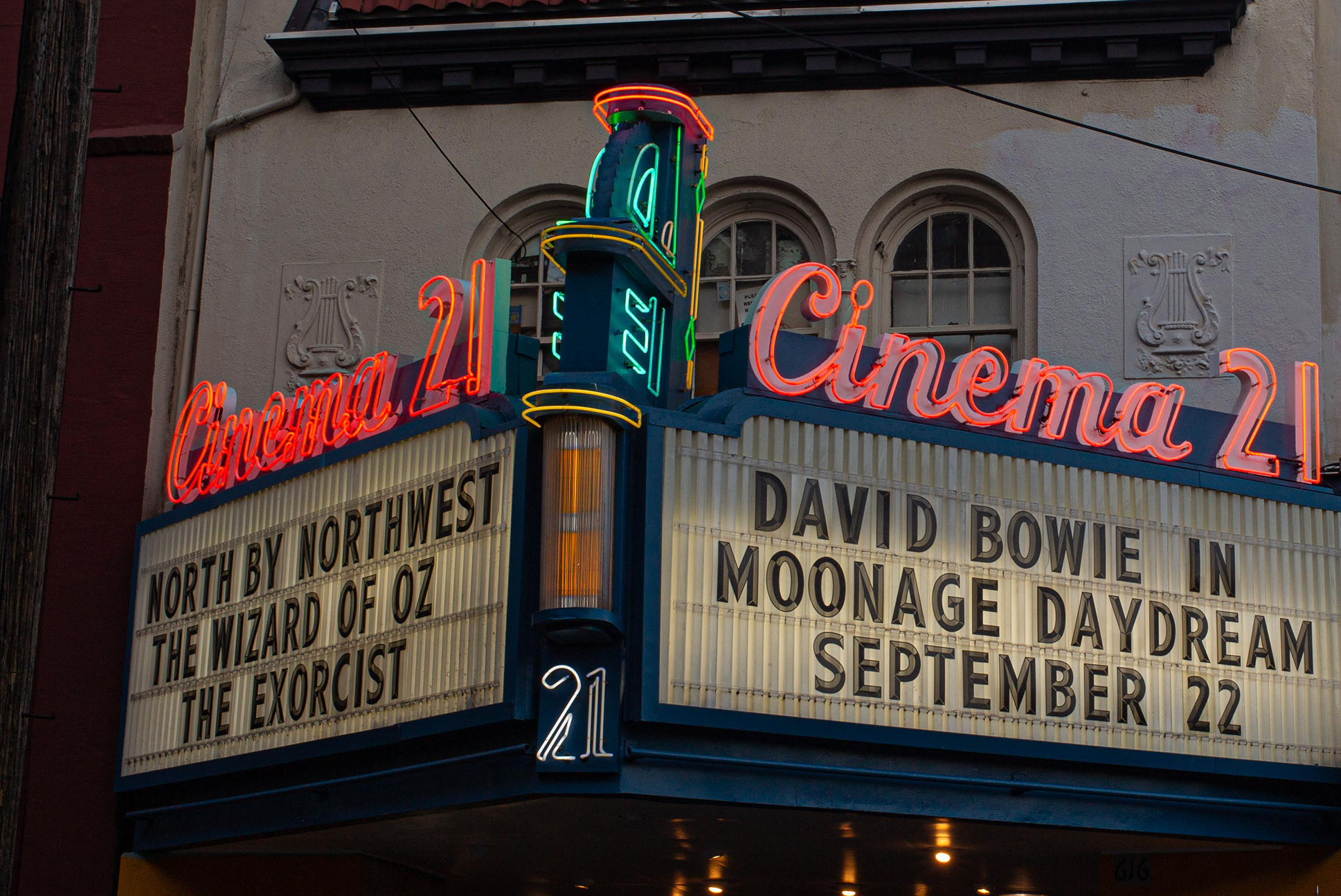Pop Culture Worth Your Time: Dolly Parton, Dash & Lily, and More

Austin Abrams (left) and Midori Francis of Netflix's Dash & Lily
Image: Netflix
2020 is almost over, but the pandemic is not. For at least the next couple months, we’re going to be hunkered down inside, waiting out the short days ’til spring shows up and sets us free. One key to survival? A killer content queue. Here’s the stuff we’re obsessed with at Portland Monthly this week, from teen romcom to true(ish) crime and beyond.
Dash & Lily
Dolly Parton
My love of Dolly Parton is not new nor unique. She is one of the most universally beloved figures in all of pop culture, you might even dare to say. In 2016, another tumultuous year, my husband, Ashod, and I went to see her at the Hollywood Bowl. There, in between her giggles, her bedazzled costumes changes, and her belting the hell out of some hits, we saw buttoned-up conservative grandmas who made the arduous trek, new wave country kids (the kind with rhinestones on the butts of their jeans), and the sassy gays from WeHo all sway together as we collectively screamed for “Jolene” and literally cried at “I Will Always Love You.” It felt safe and warm, like getting into a freshly made bed with sheets still warm from the dryer.
Last weekend, as my Friday night campy movie group and I were all deep into Dolly/Netflix’s Christmas on the Square (a film best summed up with a quote from Winona Ryder’s Reality Bites character Lelaina, “So cheesy, I can't watch without crackers.”), I was reminded how much I’ve turned to Dolly in this 💩 year.
In those early days when we were all so unsure of what the future would hold, Ashod and I spent many hours after work deep in puzzles listening to the thoroughly worth your time nine-part podcast Dolly Parton’s America. When we were trapped inside by wildfires for the ninth or 10th day in a row, we got ourselves out of a rut remembering the time Ashod surprised me on my birthday with a plane ride that eventually led to Dollywood in Pigeon Forge, Tennessee, where friends from Portland kept popping up at restaurants, and we all lived in Dolly’s sunshine for a day. Any other editor at Portland Monthly will tell you I am the TikTok-obsessed one, and videos of Dolly squealing her favorite food is potatoes (great answer) or her signature “Takes a lot of money to look this cheap” (honestly, maybe the line the nudged me into fashion in the first place) abound on that app. Each one is a little jolt of espresso on a hard day.
And now, as the vaccines begin to roll in and hope finally feels on the way—in tiny part thanks to the massive donation Dolly gave to vaccine research while other rich folks simply looked what stocks to buy to make a buck—she continues to be the cheer-up magic ticket for me. All this is to say, my recommendation for the week is any damn Dolly Parton you can get your hands on, be it the cheesy Christmas movie, the podcast series, old YouTube interviews, or just the a few minutes in the Dolly state of mind. But if you really want a recommendation (assuming you are a proper human who has already seen 9 to 5), give Best Little Whorehouse in Texas a watch. —Eden Dawn, style editor
I Am the Night
It’s been a week of true crime at the Oceanfront Chamber, a name I’ve given to my apartment just now on account of the wave-like passing cars I hear on 11th Avenue. I spent the weekend watching the six-part limited series I Am the Night (available on Hulu), which centers the granddaughter of George Hodel, a physician, piano prodigy, and the prime suspect of the infamous Black Dahlia murder.
I’m not even into true crime. I find our fascination with it a bit disturbing if I’m being honest. It’s one of those weird grey areas where I get all conservative, hot and bothered by violent acts and the way we gawk at them. I Am the Night, however, only hovers over Elizabeth Short’s murder, because we already know what happened. The bulk of the series takes place almost two decades later. In 1965, a young woman learns that she is adopted, that her real name is Fauna Hodel, and that her biological grandfather, George Hodel (Jefferson Mays), lives in Los Angeles. As Fauna leaves her home to discover where she comes from, she joins forces with Jay Singletary (Chris Pine), a disgraced journalist always hopped up on coke or Korean War trauma, and unravels the mystery surrounding her grandfather's connection to the Dahlia killing.
The series (written by Sam Sheridan and directed by Patty Jenkins, Victoria Mahoney, and Carl Franklin) is drenched in homages to hard-broiled noir that feel like literal tips of the fedora: Jay is a down-and-out reporter selling salacious photos to anyone who might buy them; an editor doles out assignments and conducts meetings from a bar booth; Los Angeles is glowing with sunlight during the day, and a cold wasteland lit with neon by night. It can be silly at sometimes, totally unbelievable at others. (I don’t believe Jay drinks that much and looks that good. Just throw in a scene of him doing pushups or something.)
However, Fauna’s exploration of her supposed biracial background raises some interesting questions about identity and cultural ownership, and even if it falls flat in some places, it reminded me of squabbles I’d have in middle school and high school. I didn’t speak Spanish. I wasn’t brown enough for the Hispanic kids, and not pale enough for the white kids. And at Fauna’s pit of cultural confusion lies a murderous history. When it's not being overtly noir-ish on its surface (sometimes laughably so), the limited series delves into dark, surreal explorations of identity, ego, art, and the evils of human kind. —Gabriel Granillo, digital editor
Let Them All Talk
Two Meryl Streep projects dropped this weekend, not at all alike in dignity. In Ry*n M*rphy's The Prom, which hit Netflix on Friday, she's woefully miscast as an aging Broadway diva in a fire hydrant wig, doomed to play opposite J*mes C*rden in one too many of the film's far-too-numerous scenes. In Steven Soderbergh's Let Them All Talk, available on HBO Max, she fares much better. It helps that Let Them All Talk is an actual movie.
Set mostly on an ocean liner crossing from New York to London (and shot, last fall, on one of its actual voyages), Let Them All Talk centers on Streep's Alice Hughes, an aging literary giant with a secretive upcoming manuscript. She takes a ship to London to collect a literary prize, and brings along her nephew (Lucas Hedges, who is ... so hot in this movie) and two old friends (Dianne Wiest and Candice Bergen). Her motivations are fuzzy. Her new agent stows away. Dianne Wiest says "bow down, bitch," to Candice Bergen over Scrabble.
Much of the dialogue was improvised from a skeleton plot by short story writer Deborah Eisenberg, and the film is full of pointed meandering. It works, on one level, as an unbelievably satisfying hangout movie: watch these legends hang out on a ship, and watch them play actual people developed by an actual 74-year-old woman instead of shrill sketches. On another, it's remarkably effective at delivering the typical pleasures of a Soderbergh film: the on-the-fly digital photography is crisp and gorgeous, and the proceedings are hyperattuned, as always, to the corrosive effects of capital on our lives. Every relationship onscreen is clouded by an implicit search for money, or power, or both, and Let Them All Talk has its fun while really highlighting the tragedy of that setup.
In the third act, the film flies off the rails spectacularly, but it doesn't matter. A late plot twist induces eye-rolls, yes, but the power of what comes before lingers and supersedes. Bergen, astonishing, plays a woman bruised by Streep's reckless mining of her personal life for literary fodder. Gemma Chan, who plays Streep's agent, is a marvel. And Streep herself, so monolithic she can sometimes be alienating, reminds us here why she's a giant, even as Soderbergh intentionally focuses our attention more pointedly on the supporting players. —Conner Reed, arts & culture editor




